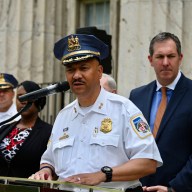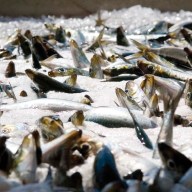TSB report finds faulty engine setup led to spill into Cheakamus
PHOTO COURTESY TRANSPORTATION BOARD OF CANADA
The Transportation Safety Board of Canada yesterday released its report into the 2005 CN train derailment into the Cheakamus River, above, which spilled caustic soda into the river, killing half-a-million fish.
Tobe
After two years, the community of Garibaldi just north of Squamish knows what caused a CN train derailment that spilled 40,000 litres of caustic soda into the nearby Cheakamus River, killing half a million fish.
Details of the Transportation Safety Board’s report were released yesterday in Squamish, and found that a series of human errors, as well as a lack of training and proper supervision, contributed to the accident.
George Fowler, investigator in charge of the accident, said two mid-train engines had been improperly set up before leaving North Vancouver on the morning of Aug. 5, 2005.
The two engines, configured backwards, shut down within minutes of leaving the yard, unbeknownst to the conductor.
It wasn’t until the Lillooet-bound train hit the steep climb at Squamish that the operator realized there was a problem.
As the train started slowing down under the weight of the engines, he added more horsepower. This caused the train to straighten out over a tight curve, pushing nine cars over the tracks and plummeting into the Cheakamus River.
Wendy Tadros, chair of the TSB, said the Squamish subdivision is one of the most challenging routes in Canada, with the curves and grades twice as sharp and as steep as elsewhere in Canada.
“In our investigation we found CN did not pay enough attention to these risks,” she said.
A few months after the accident, Transport Canada ordered CN to make a series of safety improvements along that route, including reducing the length of trains.
Jim Feeny, a spokesman for CN, said the company is working with local hatcheries to help restock the fish population in the river.
Edith Tobe, project manager with the Squamish River Watershed Society, was one of many volunteers who removed the thousands of dead and decaying fish from the river after the accident.
She said while CN’s promise to restore the fish population was honoured, it has taken too long to get the process underway.
“It took more than a year to develop a real strategy. Now, here we are just shy of two years later and it’s a slow and tedious process. There’s no quick fix or way of knowing what the overall impact of the spill will be.”
| Troubled area |
|
















